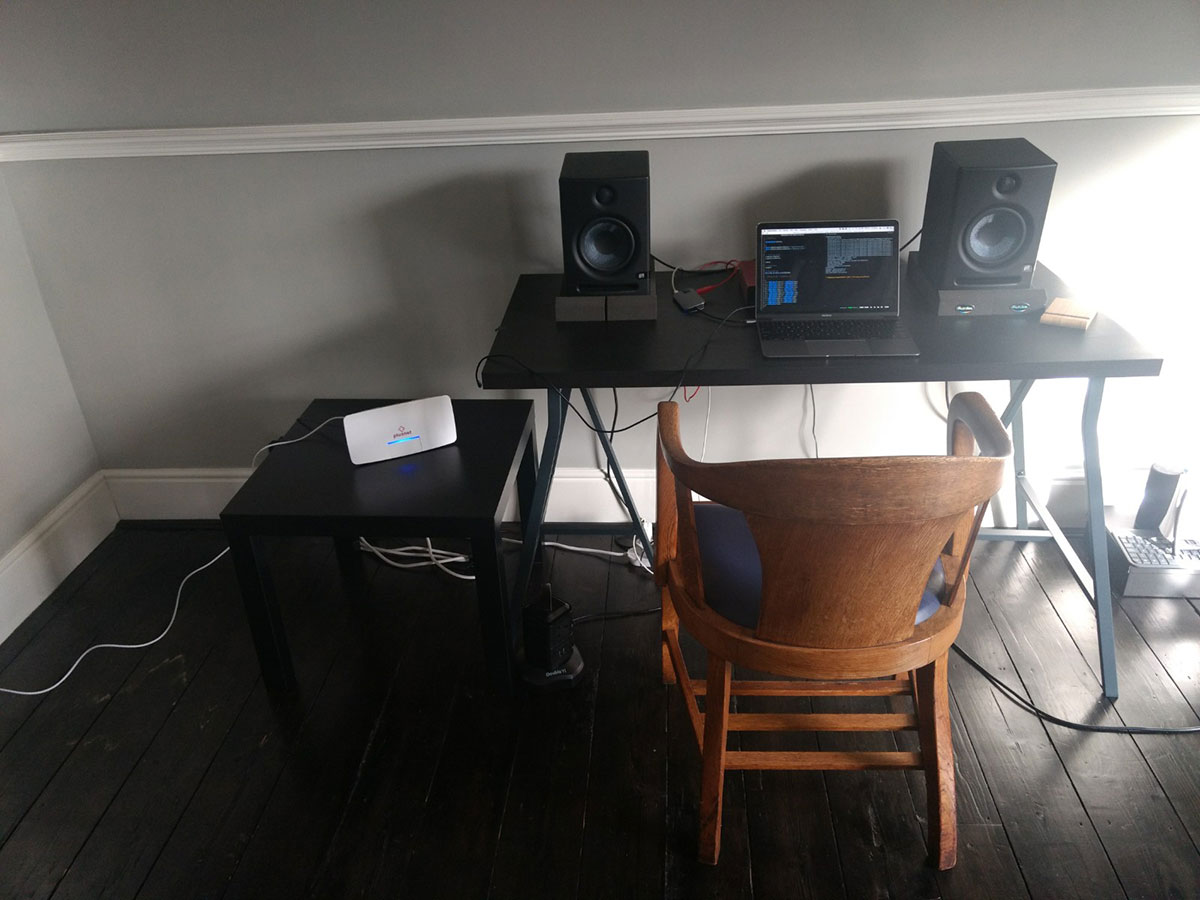Live Coding at the Network Music Festival 2020

It has been a real pleasure to be part of the Network Music Festival 2020 and contribute with one performance out of more than 50 performances from all around the world to a festival that has pushed the boundaries to what it might be a new way of conferencing and festivaling. It has been a brilliant, cutting-edge and timely festival with creative solutions to cope with the pandemics lockdown situation. The 2 algoraves in VR spaces is the perfect example of how we can integrate new technologies to create new ways of experiencing music and enhancing the flat 2D communication that we are used to with the more traditional video and web conferencing tools. The festival has runned on the principle of mutual aid and free-to-view donate-what-you-can, which is also very important to allow for diversity and inclusivity. Thanks to the main festival organisers Shelly Knotts, Charles Celéste Hutchins and Holger Ballweg for a great job!
My performance “A Live Coding Exploration of How the Network Sounds” was programmed on Friday 17 July in the 11am morning concert entitled “Memory and Resonance”. The concert was hosted by Ximena Alarcón, and also featured performances by Andamio; Gerard Roma, António Ramires and Frederic Font; Brain Dead Ensemble; Electroacoustical Poetical Society and The TOWS ensemble. My performance was specially prepared for this year’s festival’s theme: “Communities Near and Far”. You can find more information about the piece and the technical setup here. To summarise, the aim of this live coding session was to explore how the network sounds by means of capturing the sound emitted from a network router combined with related crowdsourced sounds from the online database Freesound.org which are retrieved, transformed and vanished in real time.
As with my previous network music experiences, I had to spend more time than expected with the technical setup and making sure that the streaming was working at the right speed. But all in all, it was nice to explore the second version of MIRLC that I am currently developing. In particular, I am exploring the communication between two modules, MIRLCRew2 and MIRLCRep2, which will be released soon (for now only the code of the first version MIRLC is publicly available).
I also used a DIY induction microphone that picks up electromagnetic fields, which has a special value because it was built during Nicolas Collins workshop “Short Hardware Hacking” at Sonar+D last year. I was also happy to try the GoPro HERO8 in webcam mode with the very recently published GoPro Webcam Beta Firmware.
Here you can watch the video of the session, with some delay between actions and sound, probably due to I was running in parallel SuperCollider, OBS and Zoom from the same computer, as well as recording and streaming at the same time, but you can get an idea. Around the middle of the performance there was a failure of the mic in signal, which had never happened to me before, but I was able to reroute. This confirmed that there is always a risk when when dealing with network signals, yet the space is still interesting.